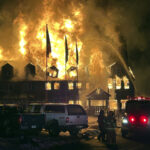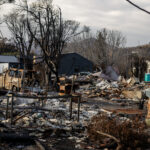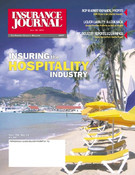Spending a night at a hotel or motel can seem like a simple thing to do for the tourist or business traveler, but who makes sure that guests will stay in a secure environment?
That’s up to the hotel operators, but should anything go wrong, insurers are there to see that it’s covered. Exposures for the hospitality industry can include a myriad of areas such as fire, pool hazards, workers’ comp, liquor liability, security, and many more that are of utmost importance to both hotel owners and the agents and brokers who handle their business.
Just how profitable can this market be? According to many industry experts, insuring the hospitality industry can be both challenging and profitable.
Bringing in the tourists
There are thousands of hotels and motels throughout the Golden State. Since its start more than 50 years ago, the California Lodging Industry Association (CLIA) has been serving the needs of the independent lodging industry. It began in 1946 when a small number of motel owners initiated the Motor Hotel Association of California, which later became known as the California Motel Association, a nonprofit trade organization. The group changed its name to its current title in 1983.
According to figures from the CLIA, there are some 5,500 hotels, motels and inns in the Golden State. The largest concentrations of lodging properties are in the major metropolitan areas that attract the largest number of visitors and conventions—namely, San Francisco, Anaheim, Los Angeles and San Diego. Currently, the largest chain by brand of properties in the state is Best Western.
According to Pete Moraga, a spokesman for Insurance Information Network based in Los Angeles, the most common claim in the hospitality industry is slip-and-falls, which come under the general liability part of the insurance policy. “We’re seeing that as the number-one claim all across the country, to the extent that most hotel chains and larger properties have special training built into their personnel and human resources, in order to avoid slip-and-falls,” Moraga said.
One exposure that still exists, but is not a major issue, is fire.
“The reason for that is because most motels now have sprinklers,” Moraga indicated. “The turning point for that aspect was the big MGM fire in Vegas. After that fire, hotels were required by law to have sprinkler systems and upgrade fire protection. That had a major impact.”
The Nov. 21, 1980, Las Vegas disaster saw 84 people die at both the hotel and at the hospital from injuries sustained in the fire.
Prior to that day, fire marshals had insisted sprinklers be installed in the casino during construction in 1972. The hotel refused to pay for the sprinkler system, which would have cost $192,000. Authorities studying the fire said the system could have prevented the disaster. When all was said and done, MGM was faced with $223 million in legal settlements.
A wide array of exposures
From potential disaster in the kitchen to weather-related damage, the hospitality industry must protect itself from front to back.
“One of the biggest exposures for a full-service resort-type hotel is going to be the landscaping,” Beazley noted. “You need coverage for your landscaping. Curbs and lighting are critical. A lot of resorts have sprinklers and do work around the premises in the evening hours. We’ve had a couple big liability claims because they haven’t been cordoning off those areas.”
Pools, especially this time of year, are another major exposure. “If you have a lifeguard on duty, you are admitting that you’re responsible for those children,” Beazley said. “Unfortunately, therein lies the problem—as opposed to saying, ‘We have no lifeguard and we do not take any responsibility.’ If you take on some responsibility, it can actually can make your claim situation worse.”
The biggest exposure, according to Beazley, is the kitchen area. “We have to make sure the maintenance is kept up.”
Hotel staff require specialized coverages as well. Some hotels sub-out and get temporary or agency staff in, others have their own employees, so the workers’ compensation coverage is critical.
“With any hotel operation, it all comes down to training,” Beazley noted. “That can vary tremendously.”
According to Sarah Elston, vice president of marketing and new products for Cygnet Risk Management Inc., Cygnet looks for several set eligibility criteria when offering workers’ comp to the hospitality industry.
“We’re looking for the better properties because they generally have the better staff; we’re looking for a lot more input from the management as far as pre-screening their employees and looking out for the best interest of their employees. We do have a preferred group credit because we are specific to the hospitality industry, California only.”
According to Elston, “We have three big points we sell on our program: 1) We really push for return to work programs; 2) We like employers who predesignate medical clinics because that ultimately will give them the initial control of the claim and direct the claim in the right direction; and 3) Timely reporting of the claim.
Cygnet founder Ron Ortega added, “Worker’s comp might be the next power crisis in California.”
While hospitality owners and operators must insure against injury to the occupants of the hotel, they also must insure the building itself, along with the equipment used in it.
Equipment maintenance, along with repair insurance, is another innovative solution to the property management issues that can take both time and expenses away from an owner. Maintenance contracts can cover a wide list of equipment, including the telephone system, computer system, security system, faxes, copiers, elevators, ATM machines, and anything else necessary to operate on a daily basis.
Putting the programs together
Ben Beazley, a senior vice president who specializes in property brokerage for Swett & Crawford, sees the market for the hospitality industry focusing on specialized coverage.
“In the past, a lot of companies have tried to get into it and tended to write all hotels and motels,” Beazley said. “What we discovered is that you need to carve out a niche, to get into a specific area. Not only can there be too much, but you tend to pick up one or two accounts that are not well maintained and do not have good management and tend to burn your entire book.”
According to Beazley, access to the top-floor program is only for a limited number of agents who will partner with the company and develop good information and good accounts. “Secondarily, we have moved toward dealing with only the full-service hotels with a diamond rating of ‘AAA’ or more and who provide full amenities,” Beazley said. “Our experience has been with the franchise operations, they tend to have more of a risk management approach, obviously they have full-time staff 24 hours a day and that helps to mitigate major claims.”
Beazley noted that, “Our program carves out the property, the crime and the boiler, and then the general liability is generally placed separately by a standard market. A lot of the standard markets are getting out of the property arena just because they’ve written every single hotel market that came across their desk and didn’t necessarily put in retentions. For example, if you’re in the Midwest, you’re going to have hailstorms and those are going to be the majority of the damage. So, we tend to put high hail deductibles on there. We write windstorm in Florida, etc.”
National Specialty Underwriters (NSU) in Bellevue, Wash., specializes in programs for the hotel industry nationwide. Company spokesman Rich Hancock said the company “is unique in what we do. Aside from our medical malpractice side, we focus directly on hotels. There are other companies that offer hospitality programs, but none that focus 100 percent on hotels.”
NSU offers several programs for hotels based on their classification as budget, middle market or luxury lodging. The Limited Service Program caters to the economy/budget hotel market, the Select Program covers the middle market and the Premier Program provides coverage for luxury hotels.
Catering to economy hotels that usually don’t have restaurants, the Limited Service Program is anchored by a business owners’ policy written exclusively by The St. Paul Companies. It includes coverage for general liability, property, boiler and machinery, and crime. Business auto liability is available on a separate policy. The limit for general liability coverage is $1 million, and an optional umbrella policy that provides up to $10 million in limits.
NSU’s Select Program is geared toward the largest segment of the lodging industry—hotels with rooms that run $40 to $100 per night. The company said it is an effective program for hotels that have a restaurant and more than 100 rooms. The program provides umbrella limits up to $250 million, with a minimum primary account premium of $25,000.
The Premier Program for luxury hotels, hotel casinos and destination resorts caters to properties accustomed to buying in excess of $25 million in liability limits and assuming some risk through a self-insured retention. It offers a liability limit of up to $300 million. Policy premiums are based on the number of guest rooms.
Challenges in underwriting
Understanding the risk is always a challenge, Ortega said. “We stay with the brokers that are specialists within the industry that can deliver the service that is really merited.”
According to Beazley, “The most challenging part of writing hospitality business is your low-to-middle amenity or room-rate hotels. That is going to be the challenge to place it there, because the premiums are not there. One loss can wipe out your entire book.”
Helene Lerner of Cascade-Amstar has been writing property, liability and fidelity coverage for hotels and motels for several decades. According to Lerner, knowing the client is key—”knowing that the owner is preventative conscious. He welcomes inspections, he welcomes suggestions, he prefers no losses occur.
“A lot of [hotel owners] don’t realize what their exposures are,” Lerner noted. “You have a pool, but it’s not fenced. They don’t have guest property covered. Landscaping and security—they forget that. That can be a very serious problem.”
Lerner noted that training and professionalism go a long way in deciding just how successful and prosperous an establishment can be. “The larger the unit, the more professional you seem to be,” Lerner said.
Ortega agreed, noting there is a certain level of sophistication once you get into a certain sized property. “Independent owners sometimes only understand costs,” he said. “My background is strictly underwriting, so I always approach it from an underwriting standpoint where you educate, explain and document, and if they don’t want it, then that’s their decision. There’s certainly more demand from the larger hotels as far as coverage and sophistication than the smaller ones, but it still takes the same amount of time.”
Cygnet’s clients include Hyatt, Hilton, Marriott, Ramada, Doubletree, Radisson, Clarion, Holiday Inn, Sheraton, Howard Johnson, Embassy Suites, Lawrence Welk Properties, along with other franchises and independent properties in excess of 150 units.
Strength in numbers
“There are associations which have their own little group and that program is always floating around somewhere,” Lerner said. “Sometimes you can get into one and if you get into an association, you’re doing very well. Somebody starting out is going to go as tight as they can. By the time you get into a hotel chain or large family hotel or somebody who’s been around a long time, they know the rules. They also protect their customers as well as themselves.”
Due to the tightening market, Lerner predicts that the associations are going to become more powerful. “They’ll have more clout with the carriers because they do have over 5,000 members in CLIA alone and there are other associations. They’re banding together for their own protection and preservation. They can demand more as group, more coverages, more broader coverages, and they also gain more knowledge.”
What will the agent’s role be in this changing landscape?
“I think the agent needs to do his homework first, know what his exposures are,” Lerner said. “From both the property and liability standpoint, there are a million things to think about. You look at any and every thing that could cause a loss. Fires are not as prevalent in liability as the trip-and-falls. Even employee theft is not that common. If you have a pool, you have a bigger situation. You almost have to go into that hotel and dissect it by what its exposures are.”
Ortega notes there are fewer players in the hospitality insurance business these days. “It’s becoming more [common]—particularly outside of California—that there are fewer providers of this kind of insurance. There are a few regional carriers in California that write hospitality insurance specifically. Outside of California, the market is certainly shrinking, even in California, especially in work comp. We just started a work comp program.
“If you’re an underwriter, it is a good time to be going into the hospitality insurance market,” Ortega continued. “There was a great shakeout in the hotel industry itself, and it got itself back into a profitable state. A lot of people who financed and built a lot during the ’80s had to sell out and they took a bath. It stayed alive and it’s back to profitability as I see it. The good competition is still there.”
Topics California Agencies Workers' Compensation Property Training Development
Was this article valuable?
Here are more articles you may enjoy.


 US E&S Outlook No Longer Positive: AM Best
US E&S Outlook No Longer Positive: AM Best  Owner of Historic Minnesota Resort Charged With Arson, Insurance Fraud
Owner of Historic Minnesota Resort Charged With Arson, Insurance Fraud  California Again Delays Wildfire Protection Rules for Homes
California Again Delays Wildfire Protection Rules for Homes  Pierce Named CEO of GEICO as Combs Resigns
Pierce Named CEO of GEICO as Combs Resigns 


